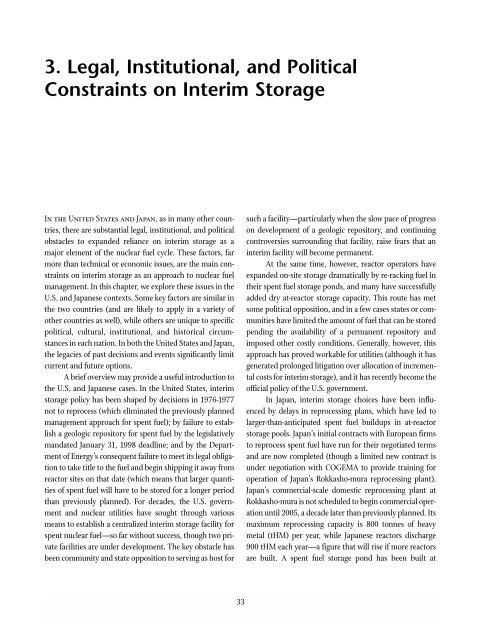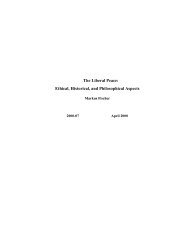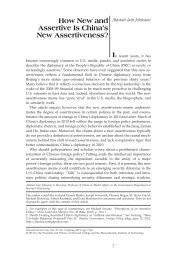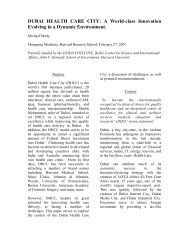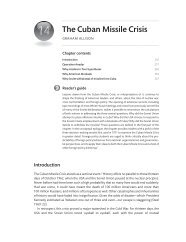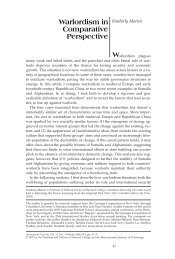Interim Storage of Spent Nuclear Fuel - Woods Hole Research Center
Interim Storage of Spent Nuclear Fuel - Woods Hole Research Center
Interim Storage of Spent Nuclear Fuel - Woods Hole Research Center
You also want an ePaper? Increase the reach of your titles
YUMPU automatically turns print PDFs into web optimized ePapers that Google loves.
3. Legal, Institutional, and Political<br />
Constraints on <strong>Interim</strong> <strong>Storage</strong><br />
In the United States and Japan, as in many other countries,<br />
there are substantial legal, institutional, and political<br />
obstacles to expanded reliance on interim storage as a<br />
major element <strong>of</strong> the nuclear fuel cycle. These factors, far<br />
more than technical or economic issues, are the main constraints<br />
on interim storage as an approach to nuclear fuel<br />
management. In this chapter, we explore these issues in the<br />
U.S. and Japanese contexts. Some key factors are similar in<br />
the two countries (and are likely to apply in a variety <strong>of</strong><br />
other countries as well), while others are unique to specific<br />
political, cultural, institutional, and historical circumstances<br />
in each nation. In both the United States and Japan,<br />
the legacies <strong>of</strong> past decisions and events significantly limit<br />
current and future options.<br />
A brief overview may provide a useful introduction to<br />
the U.S. and Japanese cases. In the United States, interim<br />
storage policy has been shaped by decisions in 1976-1977<br />
not to reprocess (which eliminated the previously planned<br />
management approach for spent fuel); by failure to establish<br />
a geologic repository for spent fuel by the legislatively<br />
mandated January 31, 1998 deadline; and by the Department<br />
<strong>of</strong> Energy’s consequent failure to meet its legal obligation<br />
to take title to the fuel and begin shipping it away from<br />
reactor sites on that date (which means that larger quantities<br />
<strong>of</strong> spent fuel will have to be stored for a longer period<br />
than previously planned). For decades, the U.S. government<br />
and nuclear utilities have sought through various<br />
means to establish a centralized interim storage facility for<br />
spent nuclear fuel—so far without success, though two private<br />
facilities are under development. The key obstacle has<br />
been community and state opposition to serving as host for<br />
33<br />
such a facility—particularly when the slow pace <strong>of</strong> progress<br />
on development <strong>of</strong> a geologic repository, and continuing<br />
controversies surrounding that facility, raise fears that an<br />
interim facility will become permanent.<br />
At the same time, however, reactor operators have<br />
expanded on-site storage dramatically by re-racking fuel in<br />
their spent fuel storage ponds, and many have successfully<br />
added dry at-reactor storage capacity. This route has met<br />
some political opposition, and in a few cases states or communities<br />
have limited the amount <strong>of</strong> fuel that can be stored<br />
pending the availability <strong>of</strong> a permanent repository and<br />
imposed other costly conditions. Generally, however, this<br />
approach has proved workable for utilities (although it has<br />
generated prolonged litigation over allocation <strong>of</strong> incremental<br />
costs for interim storage), and it has recently become the<br />
<strong>of</strong>ficial policy <strong>of</strong> the U.S. government.<br />
In Japan, interim storage choices have been influenced<br />
by delays in reprocessing plans, which have led to<br />
larger-than-anticipated spent fuel buildups in at-reactor<br />
storage pools. Japan’s initial contracts with European firms<br />
to reprocess spent fuel have run for their negotiated terms<br />
and are now completed (though a limited new contract is<br />
under negotiation with COGEMA to provide training for<br />
operation <strong>of</strong> Japan’s Rokkasho-mura reprocessing plant).<br />
Japan’s commercial-scale domestic reprocessing plant at<br />
Rokkasho-mura is not scheduled to begin commercial operation<br />
until 2005, a decade later than previously planned. Its<br />
maximum reprocessing capacity is 800 tonnes <strong>of</strong> heavy<br />
metal (tHM) per year, while Japanese reactors discharge<br />
900 tHM each year—a figure that will rise if more reactors<br />
are built. A spent fuel storage pond has been built at


